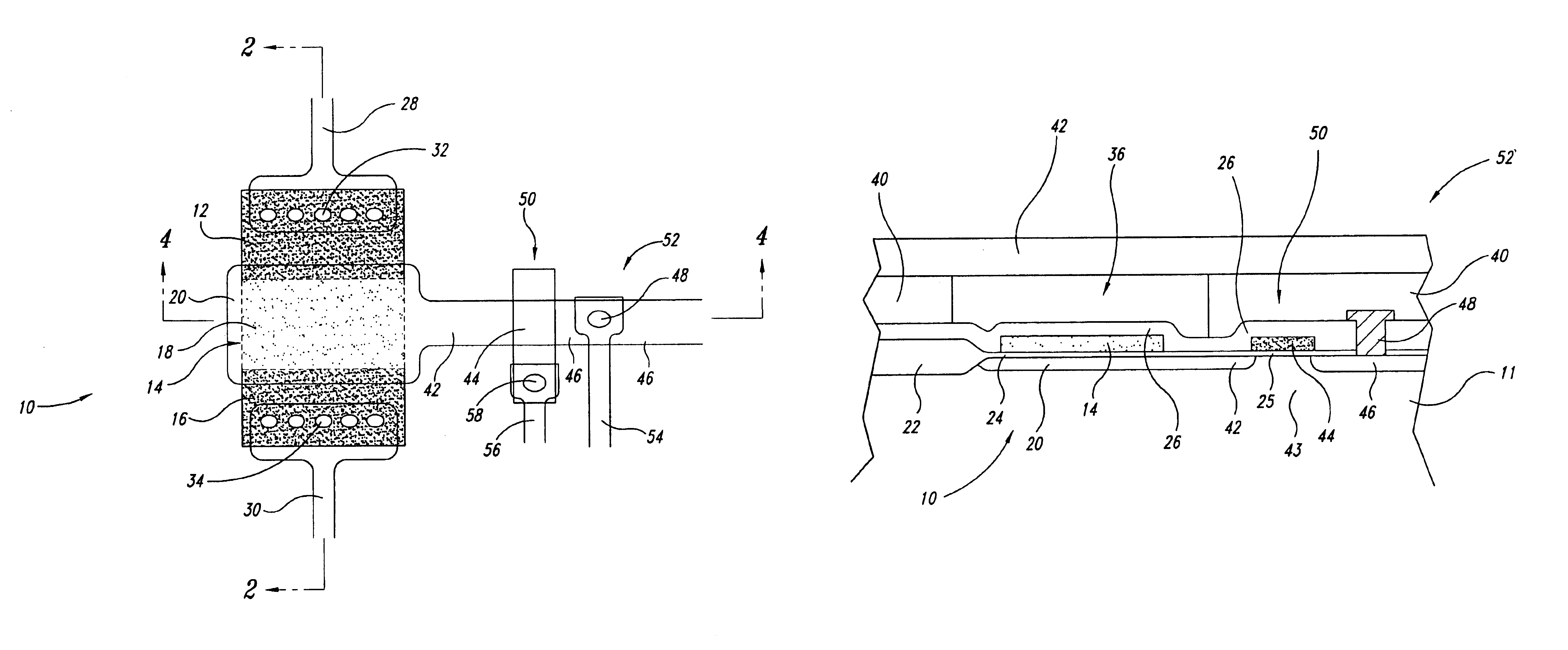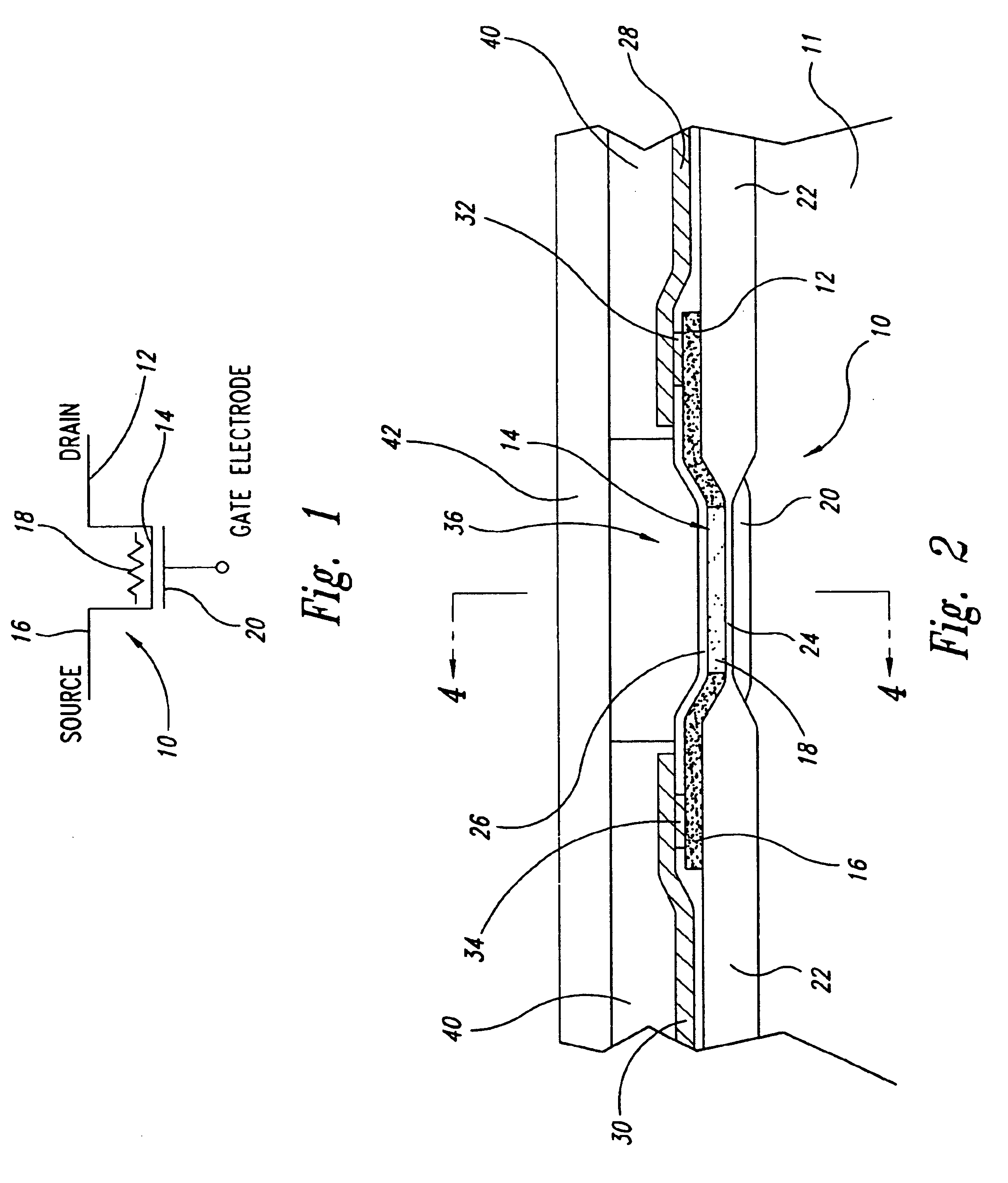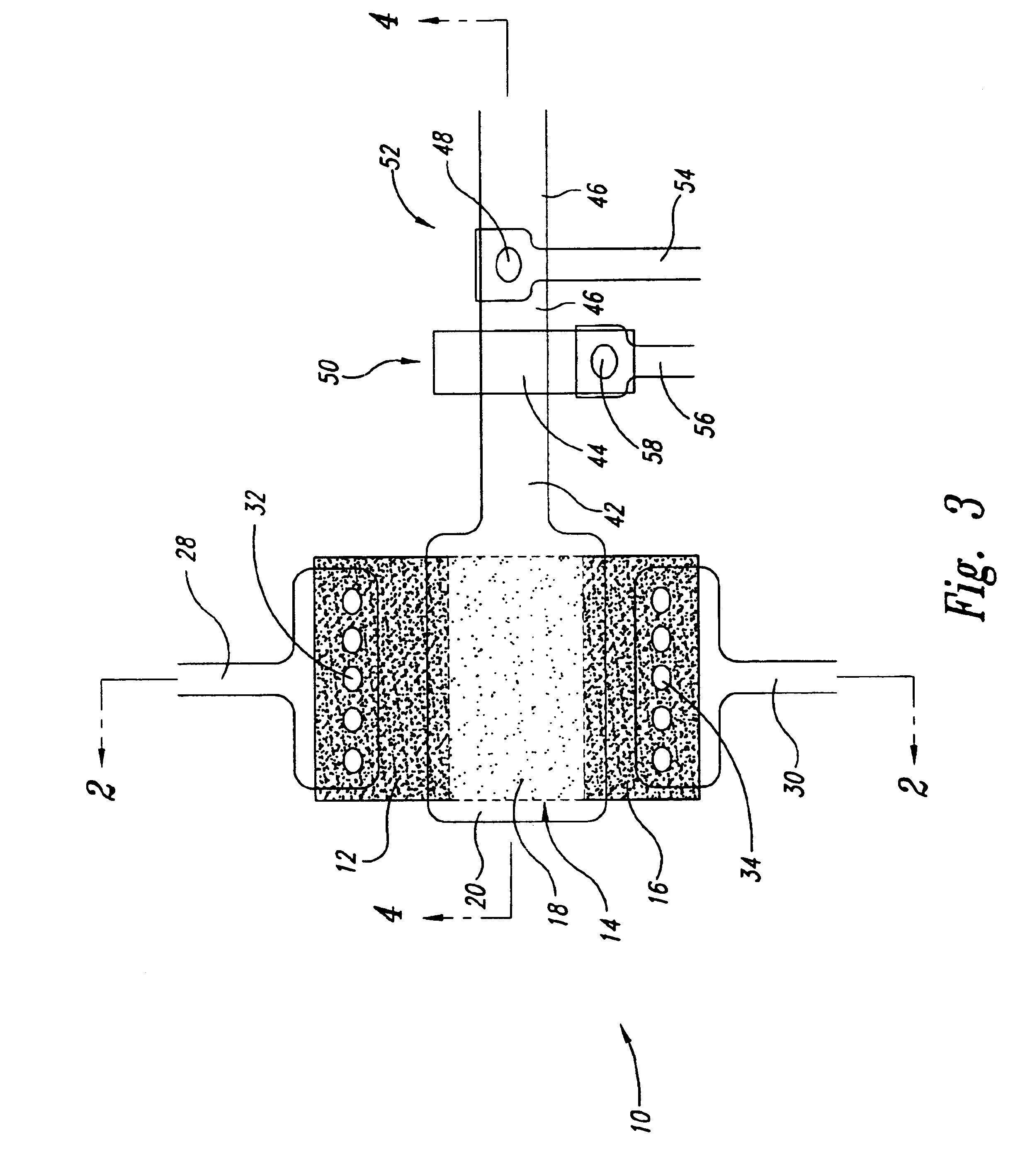Thin-film transistor used as heating element for microreaction chamber
a technology of microreaction chamber and thin film transistor, which is applied in the direction of material heat development, laboratory glassware, instruments, etc., can solve the problems of limiting flexibility, ohmic resistors are subject to material degradation, electromigration, etc., and achieve the effect of easy etching or micromachining
- Summary
- Abstract
- Description
- Claims
- Application Information
AI Technical Summary
Benefits of technology
Problems solved by technology
Method used
Image
Examples
Embodiment Construction
FIG. 1 is an electrical schematic of a thin-film transistor 10 which provides the heating element for a heater assembly according to principles of the present invention. The transistor 10 includes a drain region 12, a channel region 14, and a source region 16. Within the channel region 14 is a resistive element 18 which heats up in response to a current passing from the drain to the source. Adjacent the channel region 14 is a gate electrode 20. When a voltage is placed on the gate electrode 20, the transistor 10 is enabled so that a current may pass from the drain to the source via the channel region 14 and thus heat a resistive region within the channel region to a desired temperature.
FIG. 2 is a cross-sectional view of one embodiment of the thin-film transistor semiconductor heater assembly. A semiconductor substrate 11 is lightly doped having a desired conductivity type, and may be either a p-type or n-type depending on the desired configuration. Within the semiconductor region 1...
PUM
 Login to View More
Login to View More Abstract
Description
Claims
Application Information
 Login to View More
Login to View More - R&D
- Intellectual Property
- Life Sciences
- Materials
- Tech Scout
- Unparalleled Data Quality
- Higher Quality Content
- 60% Fewer Hallucinations
Browse by: Latest US Patents, China's latest patents, Technical Efficacy Thesaurus, Application Domain, Technology Topic, Popular Technical Reports.
© 2025 PatSnap. All rights reserved.Legal|Privacy policy|Modern Slavery Act Transparency Statement|Sitemap|About US| Contact US: help@patsnap.com



